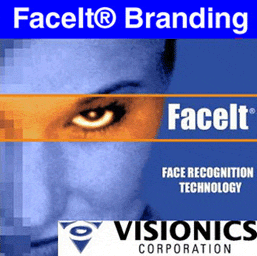
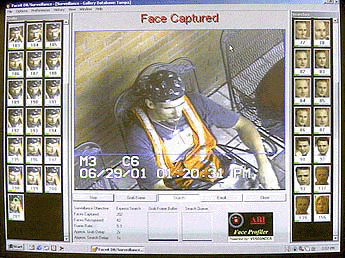 [Picture of FaceIt software as deployed in Tampa, FL, 2001;
Visionics has since merged with Identix.]
[Picture of FaceIt software as deployed in Tampa, FL, 2001;
Visionics has since merged with Identix.]
"Facial Recognition System Considered for U.S. Airports",
Washington Post, Sep 24, 2001
"Government and aviation officials are poised to begin using
facial recognition systems to scan airport terminals for
suspected terrorists, possibly including Reagan National
Airport when it reopens, according to people involved in
deliberations about how to improve security."
"Can Face Recognition Keep Airports Safe?",
CNet, November 2001
Several airports are adopting such face-recognition software
in an effort to beef up security after the suicide bombings
on the World Trade Center and the Pentagon. In addition to
the Logan airport in Boston, Oakland International Airport
in Oakland, Calif.; T.F. Green Airport in Providence, R.I.;
and Fresno Yosemite International Airport in California are
among those adopting identification technology to check
passengers........................Joseph Atick, president of
Visionics Corp. of Jersey City, N.J., described to the
committee how his FaceIt system could be linked to cameras
at security checkpoints and transmit information about
suspected terrorists to government officials via the
Internet, creating what he called a "nationwide shield."
"Facing Big Brother In Beijing",
The New American, Sep 24, 2001
If the proposed sale is finalized, Communist China will soon
possess the same face recognition technology currently
stirring up controversy in Tampa, Florida, and Virginia
Beach, Virginia. Visionics Corporation plans to sell the
system, known as "FaceIt," to commercial partners in China,
the August 10th Washington Times reported. Joseph Atick,
chairman and CEO of Visionics, said that one possible use of
the system is in access control, such as replacing the use
of passwords in banking.
Face Recognition via Cell Phones,
03/27/2002, internetnews.com
Chicago-based telecoms equipment maker Motorola, Inc. has
announced plans to put face recognition technology into
Java-enabled mobile phones...In partnership with Visionics
Corp. (Quote, Company Info, News) & Wirehound LLC, Motorola
said the application was being developed specifically forlaw
enforcement agencies.
"We are hurtling toward constant electronic
scrutiny -- of the enemy and ourselves" --
National Geographic
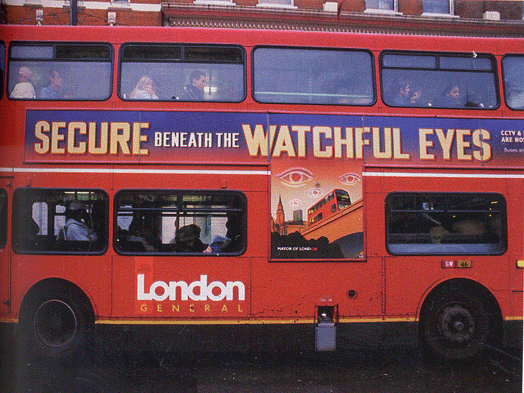
"When posters started appearing last year on London double-
deckers reading "Secure Beneath the Watchful Eyes", the Orwe-
llian overtones were so strong that more than a few Londoners
mistook the signs for satire. But the posters were real. The
United Kingdom has become perhaps the world's most surveilled
nation, with more than four million closed-circuit television
cameras, including fancy rotating models with wipers to clear
the rain." -- National Geographic, November, 2003, pages 8-9
"Watching You: The World of High-Tech Surveillance"
New Super-Fast Transistor for Wireless Broadband,
Jay Wrolstad, 04/30/2002, WirelessNewsFactor.com
The new transistors can handle high-power and high-frequency
signals simultaneously -- a significant breakthrough, the
researchers say. For wireless broadband, which requires data
transmission speeds in the megabits-per-second range, such a
combination is critical, according to the IEEE.
Imageware and Identix Bring Facial Recognition to the Web,
July 2002
On the vision of ImageWare and its launch into the
browser-based facial recognition arena, CEO Jim Miller said,
"ImageWare is taking facial recognition out of the office
and delivering it to the law enforcement, government and
transportation sectors via the Internet and wireless Web."
Web-Based Face Recognition System,
Xinfeng Yang, Yanchao Xing, Ann Nguyen, July 10, 2002
Another web-based system combining intelligent software
agents with face recognition engines has now been developed
by the ANSER team [2]. The Missing Children Locator Agent is
an example of one of ANSER's systems. The software agents
continuously search and retrieve facial images and relevant
information from web sites on the Internet. A back-end face
recognition engine analyses each image file to detect and
match each face to a set of stored face images of missing
children. The user can also search for an input image from
the database for a match.
DARPA working on software to ID people by the way they walk,
CBS, 12/06/2002
Several universities have been working with the Defense
Advanced Research Projects Agency to develop gait
recognition as another viable biometric tool.
CO Dept. of Rev. Adopts Next Generation Face Recogition.,
Dec. 4 2002, Identix press release
Digimarc ID Systems, LLC, a wholly owned subsidiary of
Digimarc Corporation (Nasdaq:DMRC), today announced that the
Colorado Department of Revenue (DOR), Motor Vehicle Business
Group has enhanced its Digimarc ID Systems' driver's license
issuance program with new state-of-the-art automated facial
recognition technology.
Face Scans OK by Most Americans,
CBS, Jan 2003
(CBS MarketWatch) The use of fingerprint, retina and
facial scans for routine commercial transactions is fast
approaching and Americans seem more than prepared to give up
their biometric impressions, a new survey suggests.
Face-Recognition Technology Improves
New York Times, March 14, 2003, by BARNABY J. FEDER
ABSTRACT - Facial recognition technology has improved
substantially since 2000, according to results released from
test by four federal agencies involving systems from 10
companies; data, from latest in series of tests conducted
every two years and overseen by National Institute of
Standards and Technology, is expected to encourage
government security officers to deploy facial recognition
systems...
Pentagon's Plan for Tracking Everything That Moves,
Village Voice, July 2003
As currently configured, the old-line cameras speckled
throughout every major city aren't that much of a privacy
concern. Yes, there are lenses everywhere—several thousand
just in Manhattan. But they see so much, it's almost
impossible for snoops to sift through all the footage and
find what's important. CTS would coordinate the cameras,
gathering their views in a single information storehouse.
The goal, according to a recent Pentagon presentation to
defense contractors, is to "track everything that moves."
Iris, fingerprints and face to be used in UK ID card trial
December 08, 2003, www.silicon.com, by Andy McCue
 Iris, fingerprint and facial recognition will all be tested
as part of the UK Passport Service's six-month trial of
biometric technology ahead of the introduction of
potentially compulsory national ID cards.
Iris, fingerprint and facial recognition will all be tested
as part of the UK Passport Service's six-month trial of
biometric technology ahead of the introduction of
potentially compulsory national ID cards.
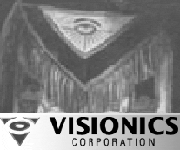
 [Above, the Visionic's logo (now called Identix) resembles a
familiar symbol in Freemasonry, as can be seen from the scan
above, which shows the similarity between Harry S. Truman's
33rd Degree Masonic Craft apron and the Visionic's logo. The
oval eye in the inverted triangle appears in both. Now a new
logo has replaced the old Visionics' one. The new Identix
logo features a highlighted 'x'; as Texe Marrs notes, Osiris
was often designated by an 'x', and if so, then, the Identix
logo contains in symbolic form the all seeing eye of Osiris,
as did the old one, albiet in less-obvious, symbolic short-
hand form. Note how the 'x' is highlighted and how the i-dot
appears over the x.]
[Above, the Visionic's logo (now called Identix) resembles a
familiar symbol in Freemasonry, as can be seen from the scan
above, which shows the similarity between Harry S. Truman's
33rd Degree Masonic Craft apron and the Visionic's logo. The
oval eye in the inverted triangle appears in both. Now a new
logo has replaced the old Visionics' one. The new Identix
logo features a highlighted 'x'; as Texe Marrs notes, Osiris
was often designated by an 'x', and if so, then, the Identix
logo contains in symbolic form the all seeing eye of Osiris,
as did the old one, albiet in less-obvious, symbolic short-
hand form. Note how the 'x' is highlighted and how the i-dot
appears over the x.]
EU plans to include facial and fingerprint biometric data
on travel documents for non-EU foreign naitonals by 2005,
Lisa Kelly, 09-10-2003, vnunet.com
Virginia Beach is last U.S. city scanning faces
LOS ANGELES TIMES, Monday October 13, 2003
"VIRGINIA BEACH, Va. (LAT) - Twelve feet above the sidewalk,
three cameras scan the faces of unsuspecting crowds on
Atlantic Avenue. In a police control room a few blocks away,
Lt. Dennis Santos sits before a bank of screens, holding a
joystick that enables him to pivot the cameras and zoom in
or out. With the help of computers, he is looking for
terrorists and criminals."
Prepare to Get Scanned,
Economist, 12/28/2003
Dec 4th 2003 From The Economist print edition
"As a result, biometrics are suddenly about to become far
more widespread. America will begin using biometrics at its
airports and seaports on January 5th. Under the new US-VISIT
programme, all foreigners entering on visas will have their
hands and faces digitally scanned. This will create what Tom
Ridge, America's homeland-security supremo, calls “an
electronic check-in and check-out system for foreign
nationals”. American citizens will also be affected, as new
passports with a chip that contains biometric data are
issued from next year. And the new rules specify that by
October 26th 2004, all countries whose nationals can enter
America without a visa—including western European countries,
Japan and Australia must begin issuing passports that
contain biometric data too. Moves to create a European
standard for biometric passports are already under way, and
many other countries are following suit: Oman and the United
Arab Emirates, among others, will begin issuing national
identity cards containing biometrics next year. Britain's
planned new national identity card will also include
biometrics."
Technology Strains to Find Menace in the Crowd,
New York Times, May 31, 2004, Greg Mathews
Nonetheless, major integrators of security technology for
governments, like the Unisys Corporation, Honeywell
International and I.B.M., all support face-recognition
technology for some uses. Viisage, based in Billerica,
Mass., has seen its stock price double this year, and shares
of its major domestic rival, Identix, based in Minnetonka,
Minn., have also risen sharply.
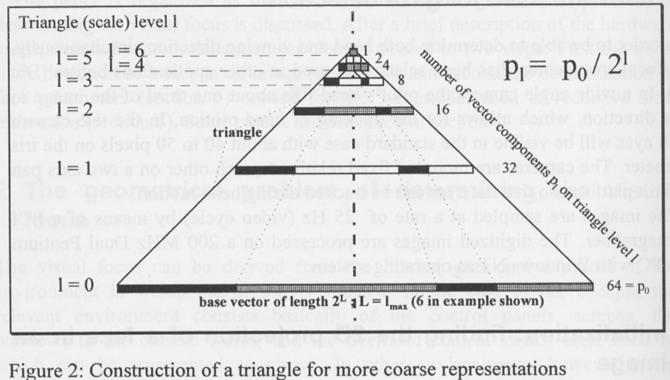
Among the methods used to to identify people with face scan
technology is the "triangle algorithm, which is considered
to be a reduced (one-dimensional) version of the 'pyramid"
technique, according to A. Schubert and E.D. Dickmanns, the
authors of "Realtime Gaze Observation for Tracking Human
Control of Attention"
LONDON, England (IDG) -- Imagis Technologies Inc. and Serco
Group PLC are working with the UK's National Crime Squad
(NCS) to develop a facial-recognition application for use in
crime fighting.
The squad is working on a national database based on Imagis
ID-2000 facial-recognition technology to use as a tool for
keeping track of convicted pedophiles and other criminals,
Imagis announced at the Biometrics 2001 Conference here on
Thursday.
"We are working with both Imagis and Serco on the
technology," an NCS spokesman confirmed.
UK-based Serco is a management and consulting company that
has been providing IT support to the U.K. government and the
NCS, a government agency, for a number of years. The
Canadian Imagis Technologies is a developer of
image-identification software with a focus on biometric
facial recognition, according to the company's Web site.

Of course their logo is the Illuminated cosmic Light with
the three slashes of the Luciferic Trinity symbol
Financial terms of the deal were not disclosed.
The Imagis' ID-2000 was picked for further development by
the UK government for its ability to identify an individual
within very large databases of images in seconds, its
ability to search for common background scenes as well as
faces, its use imagery from any source, including live video
as well as digital and analog photos and the security built
into the program that allows for the secure transmission of
data even from remote databases, Imagis said in a statement
that was vetted and approved by the NCS.
The software will aid law-enforcement agencies in
identifying victims and perpetrators as well as background
imagery for criminal investigation and case preparation,
Imagis said.
Already being used by the
NCS
, the facial-recognition technology is playing a part in the
ongoing investigation into an online pedophile group which
on Wednesday led to the arrest of 130 people worldwide, 10
in the UK, Imagis said.
The software is also being looked into as a tool for the
fight against international terrorism, an NCS spokesman said.
In October, a U.S. Senate subcommittee began looking into
the possible future use of cutting-edge devices such as
facial-recognition monitors and retinal scanners as a way to
combat terrorism
following the attacks in New York and Washington D.C. on
September 11. The Imagis ID-2000 facial-recognition
technology is also currently being used by the
Oakland Police Department
(OPD), in Oakland, California throughout Alameda County,
including the Oakland International Airport, the OPD and
Imagis announced in October.
------------------------------------------------------------
Keyware - Internet Solutions Group Europe, Excelsiorlaan
32-34, B-1930
Zaventem, Belgium
Until recently, computer security systems relied on what the
user knew (password or PIN) to identify him/herself or what
they had (a token or smart card). Lately, biometrics has
added another dimension to the authentication puzzle by
offering the choice of who the user is (fingerprints, voice,
face, etc.). According to industry analyst firm, Frost &
Sullivan, the market for authentication technologies,
including biometrics, will reach $2.6 billion by 2006. In a
response to this ever-growing variety of authentication
methods, Keyware has created the Centralized Authentication
Server (CAS), which allows organizations to manage all their
authentication methods (PKI, biometrics, smart cards, PINs,
passwords, etc.) from one server. CAS also allows
organizations to manage security in a variety of areas from
the network to the call center to building entry. With CAS,
any authentication method can be deployed at any point of
security.
Keyware specializes in biometricsùthe technology of
measuring an individual’s unique personal characteristics
such as voice, face, and fingerprints. With its advancements
of this core technology, Keyware now delivers biometric
authentication with the highest levels of security,
efficiency, and convenience for today’s environments.
 ------------------------------------------------------------
------------------------------------------------------------
Have you got caught up in the Casino schemes?
Enhance the integrity of your existing surveillance
equipment with our state-of-the-art biometric facial
recognition technology. Casino-ID will capture, store and
match surveillance photography quickly and easily. Catalog
intelligence data to identify suspects and potential risks
protecting your staff, clients and property.
Casino-ID is an advanced software application for tracking
incident-based information and photography including
suspect's MO, behaviors, characteristics and activities such
as card counting, slugs, capping and more.
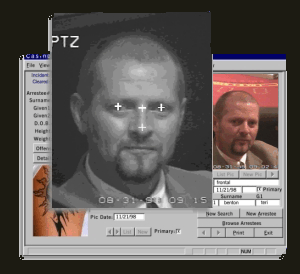 ------------------------------------------------------------
------------------------------------------------------------
When the Iluuminated Angels system is in place, have you
found an area to hide? Uh Oh, not so fast! GOG thinks of
everything.
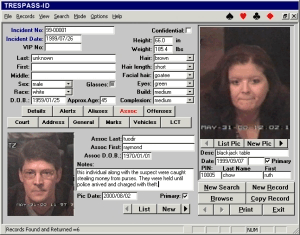 Don't get caught Trespassing.
Trespass-ID is a biometric software application designed
specifically for security professionals who need a better
way to identify and track undesirables, their associates and
specific behaviors, before they commit crimes
and do damage. Digital images are taken from the security
room and compared to a local and centralized repository of
known offender images for positive identification and
apprehension.
------------------------------------------------------------
Don't get caught Trespassing.
Trespass-ID is a biometric software application designed
specifically for security professionals who need a better
way to identify and track undesirables, their associates and
specific behaviors, before they commit crimes
and do damage. Digital images are taken from the security
room and compared to a local and centralized repository of
known offender images for positive identification and
apprehension.
------------------------------------------------------------
 Radian has great uses for its Biometrics surveilances for
the future. One of its best products will be, Oh no don't
tell me
Radian has great uses for its Biometrics surveilances for
the future. One of its best products will be, Oh no don't
tell me
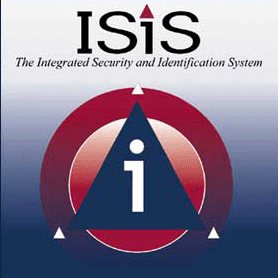 Yes Isis - Semiramis-Like in Queen of Heaven Isis, the wife
of Osiris Ra
------------------------------------------------------------
Yes Isis - Semiramis-Like in Queen of Heaven Isis, the wife
of Osiris Ra
------------------------------------------------------------
RFID tags: Big Brother in small packages
By Declan McCullagh January 13, 2003, 6:26 AM PT
Could we be constantly tracked through our clothes, shoes or
even our cash in the future?
I'm not talking about having a microchip surgically
implanted beneath your skin, which is what Applied Digital
Systems of Palm Beach, Fla., would like to do. Nor am I
talking about John Poindexter's creepy Total Information
Awareness spy-veillance system, which I wrote about last
week.
Instead, in the future, we could be tracked because we'll be
wearing, eating and carrying objects that are carefully
designed to do so.
 The generic name for this technology is RFID, which stands
for radio frequency identification. RFID tags are miniscule
microchips, which already have shrunk to half the size of a
grain of sand. They listen for a radio query and respond by
transmitting their unique ID code. Most RFID tags have no
batteries: They use the power from the initial radio signal
to transmit their response.
You should become familiar with RFID technology because
you'll be hearing much more about it soon. Retailers adore
the concept, and CNET News.com's own Alorie Gilbert wrote
last week about how Wal-Mart and the U.K.-based grocery
chain Tesco are starting to install "smart shelves" with
networked RFID readers. In what will become the largest
test of the technology, consumer goods giant Gillette
recently said it would purchase 500 million RFID tags from
Alien Technology of Morgan Hill, Calif.
Alien Technology won't reveal how it charges for each tag,
but industry estimates hover around 25 cents. The company
does predict that in quantities of 1 billion, RFID tags will
approach 10 cents each, and in lots of 10 billion, the
industry's holy grail of 5 cents a tag.
It becomes unnervingly easy to imagine a scenario where
everything you buy that's more expensive than a Snickers
will sport RFID tags, which typically include a 64-bit
unique identifier yielding about 18 thousand trillion
possible values. KSW-Microtec , a German company, has
invented washable RFID tags designed to be sewn into
clothing. And according to EE Times, the European central
bank is considering embedding RFID tags into banknotes by
2005.
It becomes unnervingly easy to imagine a scenario where
everything you buy that's more expensive than a Snickers will
sport RFID tags.
That raises the disquieting possibility of being tracked
though our personal possessions. Imagine: The Gap links your
sweater's RFID tag with the credit card you used to buy it
and recognizes you by name when you return. Grocery stores
flash ads on wall-sized screens based on your spending
patterns, just like in "Minority Report." Police gain a
trendy method of constant, cradle-to-grave surveillance.
You can imagine nightmare legal scenarios that don't involve
the cops. Future divorce cases could involve one party
seeking a subpoena for RFID logs--to prove that a spouse was
in a certain location at a certain time. Future burglars
could canvass alleys with RFID detectors, looking for RFID
tags on discarded packaging that indicates expensive
electronic gear is nearby. In all of these scenarios, the
ability to remain anonymous is eroded.
"Does the Brotherhood exist?" "That Winston, you will never
know. If we choose to set you free when we have finished
with you, and if you live to be ninety years old, still you
will never learn whether the answer to that question is yes
or no. As long as you live, it will be a riddle in your
mind." -- 1984 by George Orwell
The generic name for this technology is RFID, which stands
for radio frequency identification. RFID tags are miniscule
microchips, which already have shrunk to half the size of a
grain of sand. They listen for a radio query and respond by
transmitting their unique ID code. Most RFID tags have no
batteries: They use the power from the initial radio signal
to transmit their response.
You should become familiar with RFID technology because
you'll be hearing much more about it soon. Retailers adore
the concept, and CNET News.com's own Alorie Gilbert wrote
last week about how Wal-Mart and the U.K.-based grocery
chain Tesco are starting to install "smart shelves" with
networked RFID readers. In what will become the largest
test of the technology, consumer goods giant Gillette
recently said it would purchase 500 million RFID tags from
Alien Technology of Morgan Hill, Calif.
Alien Technology won't reveal how it charges for each tag,
but industry estimates hover around 25 cents. The company
does predict that in quantities of 1 billion, RFID tags will
approach 10 cents each, and in lots of 10 billion, the
industry's holy grail of 5 cents a tag.
It becomes unnervingly easy to imagine a scenario where
everything you buy that's more expensive than a Snickers
will sport RFID tags, which typically include a 64-bit
unique identifier yielding about 18 thousand trillion
possible values. KSW-Microtec , a German company, has
invented washable RFID tags designed to be sewn into
clothing. And according to EE Times, the European central
bank is considering embedding RFID tags into banknotes by
2005.
It becomes unnervingly easy to imagine a scenario where
everything you buy that's more expensive than a Snickers will
sport RFID tags.
That raises the disquieting possibility of being tracked
though our personal possessions. Imagine: The Gap links your
sweater's RFID tag with the credit card you used to buy it
and recognizes you by name when you return. Grocery stores
flash ads on wall-sized screens based on your spending
patterns, just like in "Minority Report." Police gain a
trendy method of constant, cradle-to-grave surveillance.
You can imagine nightmare legal scenarios that don't involve
the cops. Future divorce cases could involve one party
seeking a subpoena for RFID logs--to prove that a spouse was
in a certain location at a certain time. Future burglars
could canvass alleys with RFID detectors, looking for RFID
tags on discarded packaging that indicates expensive
electronic gear is nearby. In all of these scenarios, the
ability to remain anonymous is eroded.
"Does the Brotherhood exist?" "That Winston, you will never
know. If we choose to set you free when we have finished
with you, and if you live to be ninety years old, still you
will never learn whether the answer to that question is yes
or no. As long as you live, it will be a riddle in your
mind." -- 1984 by George Orwell